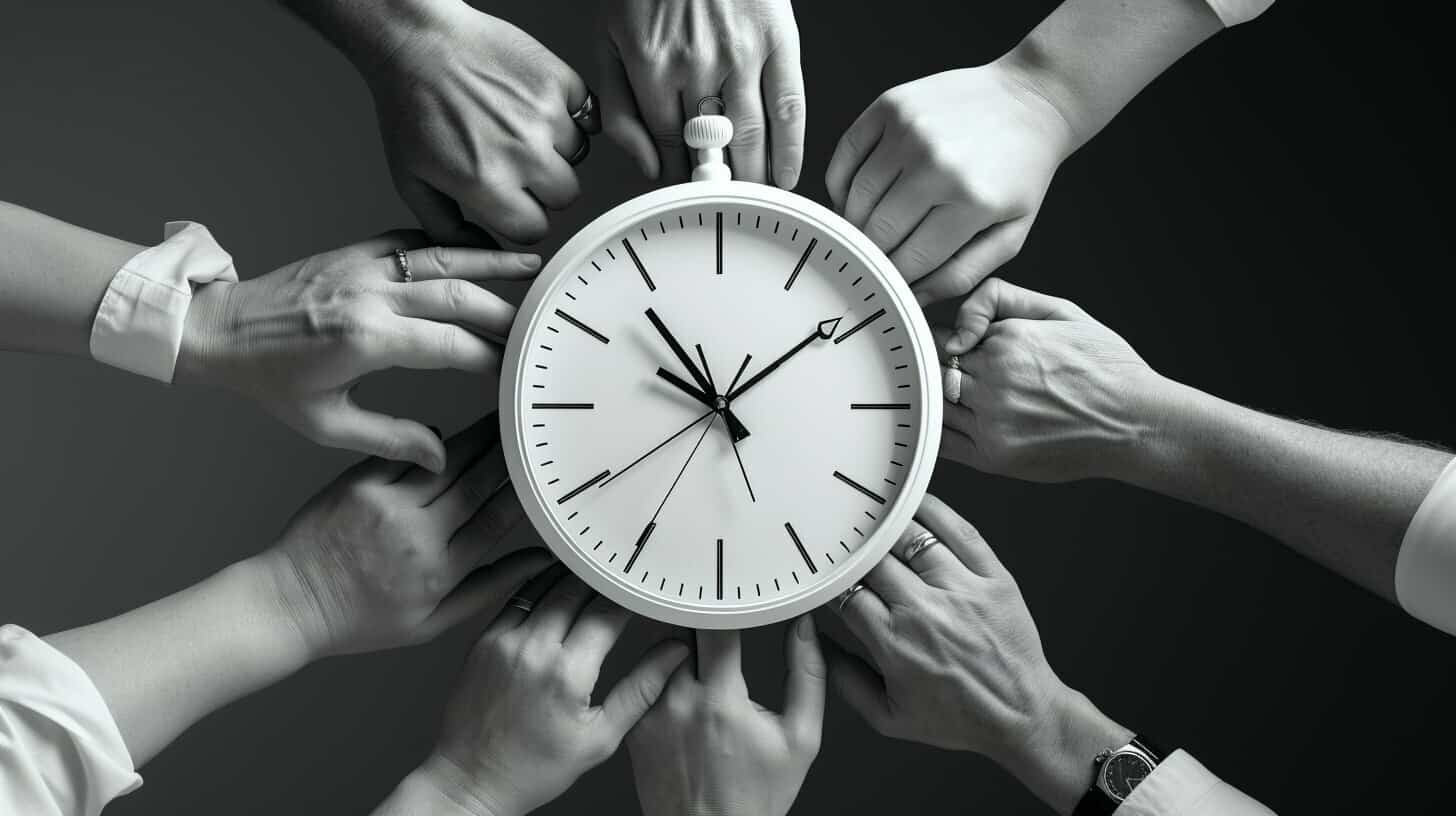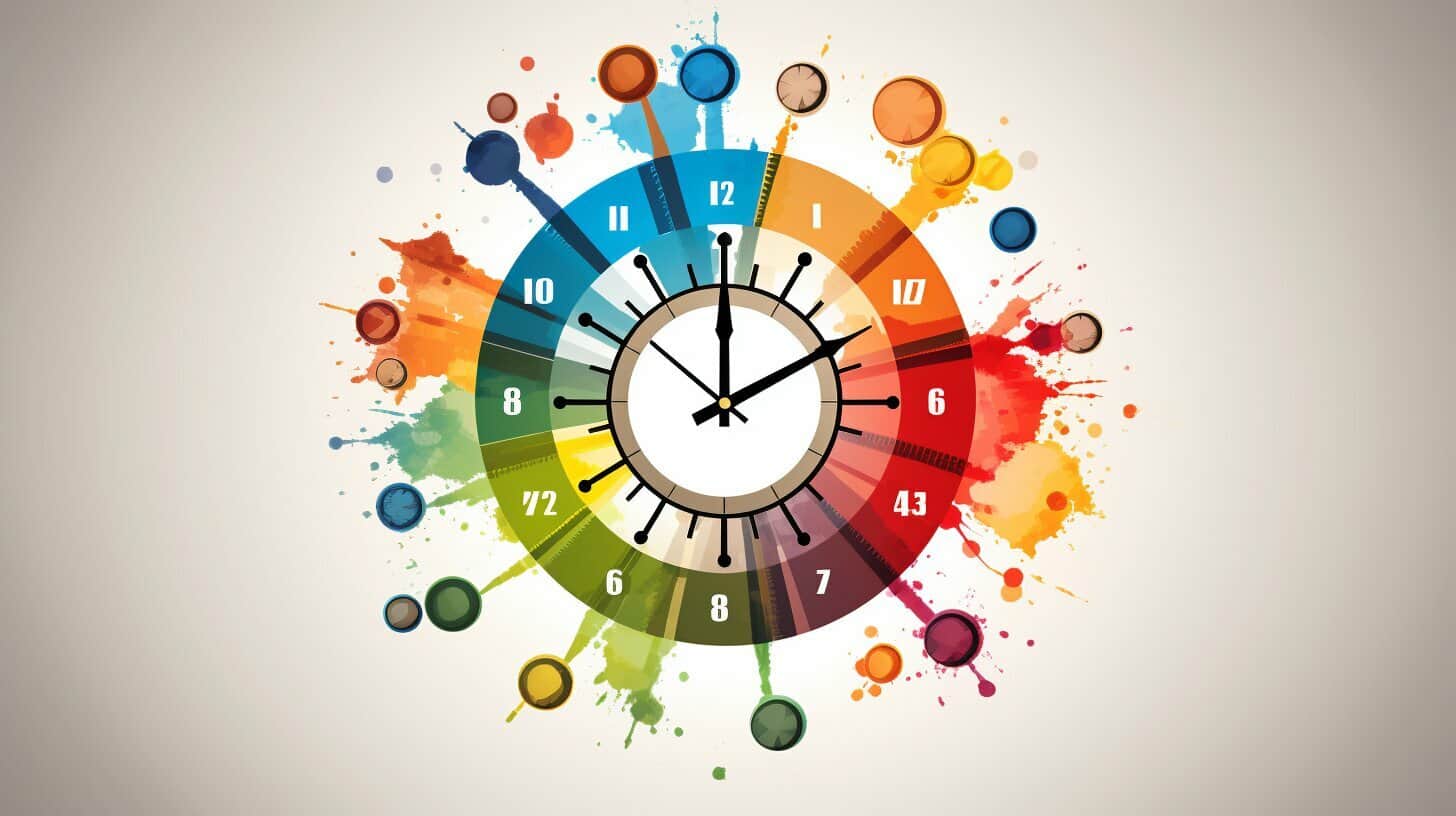As a professional journalist, I understand firsthand the importance of managing my time effectively to meet deadlines and produce quality content. That’s why I’m excited to share with you the concept of Time On Task and how it can help you enhance your performance in any profession.
Time On Task is the amount of time you spend actively engaged in a task or project without being distracted or interrupted. By improving your Time On Task, you can boost your productivity and efficiency, ultimately leading to greater success.
Key Takeaways
- Effective Time On Task management is key to maximizing productivity and efficiency.
- Improving Time On Task requires a focus on minimizing distractions and staying engaged with your work.
Understanding Time On Task
When it comes to managing time effectively, understanding the concept of Time On Task is crucial. Simply put, Time On Task refers to the amount of time spent actively engaged in a specific task without getting distracted or interrupted. The more time you spend on task, the more productive and efficient you become.
There are various time management techniques that can be employed to improve Time On Task. One such technique is the Pomodoro Method, which involves breaking work into intervals of focused work and short breaks. Another popular technique is Time Blocking, where you allocate specific times in your day for different tasks.
However, before implementing any time management technique, it’s important to analyze your current Time On Task. This can be done through Time On Task analysis, where you track and record the time spent on each task. This will help you identify areas for improvement and develop a plan for optimizing your time on task.
Strategies for Effective Task Time Management
Improving time on task can significantly increase productivity and efficiency. It is essential to manage my time effectively to ensure that I achieve the desired results.
Here are some practical strategies that I can implement to manage my tasks effectively:
- Plan my day: I start my day by creating a to-do list, outlining the tasks that I need to accomplish. This helps me stay organized and focused on what is essential.
- Prioritize tasks: I prioritize my tasks by identifying the most critical tasks that I need to accomplish first. This ensures that I complete essential tasks before moving on to less important ones.
- Break tasks into smaller goals: I break down larger tasks into smaller, more manageable ones. This helps me avoid feeling overwhelmed and keeps me motivated as I accomplish each small goal.
- Avoid Multitasking: While multitasking might seem like the best way to achieve more, it is often counterproductive. I focus solely on one task at a time, giving it my undivided attention.
- Eliminate distractions: I minimize distractions by turning off my phone, disabling notifications, and working in a quiet environment as much as possible.
- Take breaks: I take short breaks between tasks to refresh and recharge. This helps me maintain my focus and concentration and avoid burnout.
By implementing these strategies, I can improve my time on task and increase my productivity and efficiency.

Tools and Technology for Time Tracking
One of the most effective ways to improve time on task is by using time tracking technology. Various tools and software are available to help individuals monitor and analyze their time management habits. These solutions can provide valuable insights and help identify areas for improvement.
Time tracking software, in particular, can be a game-changer for those struggling to manage their tasks effectively. These programs offer features such as automated time tracking, task management, and productivity analysis. By tracking time spent on tasks, individuals can gain a better understanding of their work habits and identify time-wasting activities that can be eliminated.
| Time Tracking Tools | Description |
|---|---|
| Toggl | A popular time tracking tool that offers automatic tracking and project management functionality. |
| RescueTime | An automated productivity tracking tool that records the time spent on different applications and websites. |
| Focus@Will | A music app that uses neuroscience to improve focus and productivity. |
When selecting a time tracking solution, it’s essential to choose one that fits your individual needs and preferences. Some programs offer advanced features such as team collaboration and invoicing, while others focus solely on basic time tracking.
By leveraging time tracking technology, individuals can gain greater control over their tasks and optimize their time management skills.
Allocation Strategies for Time On Task
One of the most challenging aspects of task management is allocating time effectively. If you struggle with time on task, you’re not alone.
Fortunately, there are strategies you can use to optimize your time allocation and maximize productivity. Here are some tips:
- Set priorities: Determine which tasks are most critical and require immediate attention. Prioritize these tasks first to ensure you’re using your time effectively.
- Use a schedule: Create a schedule that outlines specific time blocks for each task. Stick to the schedule to ensure you’re allocating time appropriately.
- Break it down: Divide large tasks into smaller, more manageable parts. Focus on completing one part at a time to avoid becoming overwhelmed.
- Account for unexpected tasks: Allow some flexibility in your schedule to account for unexpected tasks that may arise during the day.
- Evaluate and adjust: Regularly evaluate your time allocation strategies to identify areas for improvement. Adjust your approach as needed to optimize your time on task.
Using the Pomodoro Technique
If you find it difficult to stay focused on tasks for extended periods, consider using the Pomodoro Technique. This method involves breaking down your workday into focused, 25-minute sessions followed by 5-minute breaks.
After four sessions, take a longer break of 15-20 minutes. This technique can help you stay on task and maintain focus while avoiding burnout.

Overcoming Common Time Management Challenges
Managing time can be challenging, but there are strategies to help overcome common roadblocks. Here are some tips:
- Identify procrastination triggers. Understanding what leads to procrastination can help you address the underlying issues. For example, if you tend to procrastinate when faced with a difficult task, break it down into smaller, more manageable steps.
- Limit interruptions. Switch off notifications on your phone and email when working on important tasks. This will help you stay focused and minimize distractions.
- Avoid multitasking. While it may seem like it helps you get more done, multitasking can actually decrease productivity and lead to mistakes. Instead, focus on one task at a time and give it your full attention.
- Eliminate time-wasting activities. Take a critical look at your daily routine and identify activities that are not productive. For example, if you spend too much time checking social media, set time limits or remove apps from your phone.
- Take breaks. It may seem counterintuitive, but taking short breaks can actually help increase productivity. Schedule time for rest and relaxation, and come back to tasks with renewed focus.
By implementing these strategies, you can overcome time management challenges and improve your productivity.
Increasing Task Efficiency
As I mentioned earlier, optimizing time on task is crucial for improving productivity and efficiency. One way to achieve this is by increasing task efficiency. Here are some effective techniques to help you get more done in less time:
- Eliminate distractions: Turn off notifications on your phone and computer, close unnecessary tabs, and find a quiet place to work. This will help you stay focused on the task at hand and minimize interruptions.
- Streamline processes: Look for ways to simplify and automate repetitive tasks. For example, you can use keyboard shortcuts, templates, or macros to save time and reduce errors.
- Take breaks: It may seem counterintuitive, but taking regular breaks can actually improve your productivity. Research shows that taking short breaks helps you stay focused and energized throughout the day.
- Manage your energy: Instead of managing your time, try managing your energy. Plan your tasks around your natural rhythms and energy levels. For example, if you’re a morning person, schedule your most important work for the morning.
By implementing these strategies, you can boost your task efficiency and accomplish more in less time. Remember, the key is to work smarter, not harder.

The Role of Focus and Concentration in Time On Task
When it comes to effective task management, one of the most important factors is focus and concentration. Without these, it can be difficult to stay on track and complete tasks efficiently. Here are some tips to help you improve your focus and stay on task:
- Eliminate distractions: Minimize distractions in your workspace by turning off notifications, closing unnecessary tabs on your computer, and setting aside dedicated time for completing tasks.
- Break tasks into smaller chunks: Large tasks can be overwhelming and cause your attention to waver. Break them down into smaller, more manageable steps to help you stay focused and motivated.
- Take breaks: To maintain focus over a longer period, take short breaks to recharge your energy and attention. This can help prevent burnout and allow you to return to tasks with renewed focus.
- Practice mindfulness: Mindfulness techniques such as meditation or deep breathing can help improve focus and concentration, as well as reduce stress and anxiety.
By incorporating these strategies into your task management routine, you can improve your focus and concentration and achieve optimal time on task. Remember to prioritize your workspace and your mindset, and avoid multitasking to stay on track and achieve success.
Maintaining Motivation for Long-Term Task Management
As someone who has struggled with procrastination in the past, I know firsthand how difficult it can be to maintain motivation when managing tasks over an extended period of time. That’s why it’s important to have strategies in place to keep motivation high and avoid burnout. Here are some techniques that have worked for me:
- Set realistic goals: It’s important to set achievable goals that are aligned with your overall vision. This helps ensure that you don’t get overwhelmed or discouraged by unrealistic expectations. Break large tasks into smaller, more manageable goals and celebrate each milestone.
- Reward progress: Celebrate your successes by rewarding yourself when you achieve a goal. This can be something as simple as taking a break to enjoy your favorite snack or engaging in an activity you love. Rewards help keep you motivated and give you something to look forward to.
- Develop a sustainable approach: Avoid overworking yourself and develop a pace that you can sustain in the long-term. It’s important to take breaks and prioritize self-care to avoid burnout. Remember, managing your tasks is a marathon, not a sprint.
By implementing these strategies, you can help maintain motivation and avoid the common pitfalls that come with long-term task management.

Measuring and Evaluating Time On Task
Measuring and evaluating time on task is a crucial step towards improving task management skills. By analyzing the effectiveness of various time management techniques, individuals can identify areas for improvement and make informed adjustments to their approach.
Time on task analysis involves tracking the time spent on each task and evaluating the productivity and efficiency of the process. By measuring the time taken to complete tasks, individuals can identify tasks that are taking too long or interruptions that are causing delays. This information can be used to optimize workflows, improve focus, and increase overall productivity.
One way to measure time on task is to use time tracking software. These tools allow individuals to track time spent on specific tasks, set deadlines and reminders, and generate reports to analyze the data. With this information, individuals can evaluate their performance and adjust their approach as needed.
It’s essential to establish benchmarks for measuring time on task. By developing metrics to evaluate progress, individuals can track their improvement and stay motivated. For example, individuals can set goals for reducing the time spent on specific tasks or increasing the number of tasks completed per day.
Ultimately, measuring and evaluating time on task is a valuable tool for improving task management skills. By using data to inform decision-making, individuals can optimize their approach and achieve greater productivity and efficiency.
Conclusion on Time On Task
Throughout this article, I have emphasized the importance of Time On Task in boosting productivity and efficiency. By understanding the meaning and significance of effective task time management, implementing practical strategies, and utilizing tools and technology for time tracking, individuals can optimize their time on task and accomplish tasks more efficiently.
It is essential to prioritize and schedule tasks effectively, overcome common time management challenges, and maintain focus and concentration to achieve optimal time on task. By measuring and evaluating progress and making informed adjustments, individuals can continue to improve their time management skills.
I encourage you to implement the strategies and techniques shared in this article to enhance your task management skills and achieve greater productivity and efficiency. With dedication and perseverance, you can develop a sustainable approach to task management and maintain motivation for the long term.
FAQ on Time On Task
Q: What is Time On Task?
A: Time On Task refers to the amount of time an individual spends actively engaged in a specific task without any interruptions or distractions.
Q: Why is Time On Task important?
A: Time On Task is important because it directly impacts productivity and efficiency. By effectively managing our time on tasks, we can accomplish more and achieve better results.
Q: How can I improve my Time On Task?
A: There are several strategies you can implement to improve your Time On Task. These include setting clear goals, prioritizing tasks, minimizing distractions, and staying focused.
Q: What are some productivity tips for effective task time management?
A: To manage your tasks effectively, try techniques such as creating to-do lists, breaking tasks into smaller, manageable chunks, and using time-blocking methods to allocate specific time slots for different tasks.
Q: Are there any tools or technology available for tracking time?
A: Yes, there are various time tracking software options available that can help you monitor and analyze your time spent on tasks. These tools can provide valuable insights and streamline your task management processes.
Q: How can I overcome common time management challenges?
A: To overcome common time management challenges, it’s important to address factors like procrastination, interruptions, and time-wasting activities. Techniques like prioritizing tasks, setting deadlines, and establishing boundaries can help you stay on track and manage your time effectively.
Q: What are some techniques for maximizing task efficiency?
A: To maximize task efficiency, you can streamline processes, eliminate unnecessary steps, and optimize your workflow. Additionally, practicing focus and concentration techniques, minimizing multitasking, and utilizing automation tools can also help improve efficiency.
Q: How can I maintain motivation for long-term task management?
A: Maintaining motivation for long-term task management can be achieved by setting realistic goals, rewarding progress, and adopting a sustainable approach. Additionally, taking breaks, practicing self-care, and seeking support can help you stay motivated and avoid burnout.
Q: How can I measure and evaluate my Time On Task?
A: Measuring and evaluating Time On Task can be done through time tracking and analysis. By using metrics and data, you can assess the effectiveness of your time management strategies and make necessary adjustments to optimize your productivity.





Leave a Reply